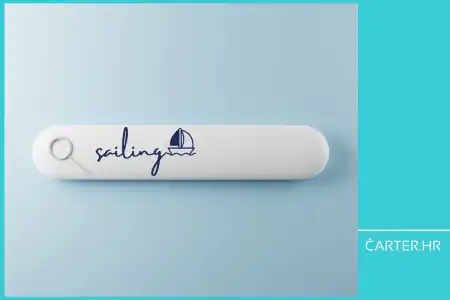
When the season starts, we all have some predictions – whether it's going better or worse. But few know exactly how much prices have dropped, where we stand in relation to competitors, and how guests are actually booking. We bring you a report with concrete figures – real data from a system that monitors over 3,000 vessels in Croatia.
In the yacht charter industry where everything changes week by week, reliable information is becoming rare. When the season starts, we all know roughly "how it's going" or "how it's not going", but rarely does anyone know precisely how prices are changing, where Croatia truly stands compared to the competition, and what the data says about guest behavior.
That is exactly why this report was created – an attempt to bring more clarity and less confusion to the information.
It is an overview of the state of the yacht charter rental market in Croatia for the 2025 season, with a focus on the period from April 1st to November 1st. Through analysis of actual data on prices and occupancy, we have tried to answer the questions that booking managers, fleet owners, and decision makers in yacht charter companies ask themselves daily.
The report uses an aggregated dataset from the Yacht Rent system, which currently holds information on more than 9,800 vessels globally, and for the Croatian market specifically, more than 3,000 active vessels with updated booking lists have been analyzed. This ensures solid representativeness, and the data has been analyzed weekly, by vessel type, and through a comparison of the 2024 and 2025 seasons.
One of the main problems of the Croatian yacht charter market is the lack of available and consistent information. Figures that are publicly shared are often taken out of context, inconsistent in terms of criteria, or rely on limited samples. Besides creating confusion, this makes decision-making harder for everyone managing pricing and planning.
According to the conducted analysis, the average rental price for catamarans in the peak season (June 14–August 30) this year is 10,202 euros, while last year it was 10,733 euros, representing a drop of almost 5 percent. Considering the high operational costs, strong seasonality, and the small number of weeks during which most revenue is generated, this decline should not be taken lightly. Sailboats are also showing slightly lower prices in the same period, although total seasonal prices show a slight increase, mostly due to the expansion of more luxurious vessels and motor yachts.
The report also highlights a comparison between the Croatian and Greek markets. Although Croatia still has a greater number of boats, higher occupancy, and higher prices, the gap is steadily narrowing. Greece is showing a healthier supply and demand ratio, and its seasonal peak begins in early August, while Croatia reaches its highest occupancy already by mid-June.
Credit for the realization of this report goes to the Yacht Rent team, especially Mr. Neven Grubišić, whose willingness to collaborate and long-standing experience in the industry were key to forming the data and context that make the report useful. This report would not be possible without the Yacht Rent system, which has been collecting data on charter offers and bookings for years.
You can explore their statistics tool yourself at this link: 🔗 https://www.yacht-rent.com/yacht-charter-statistics-charts
For everyone managing fleets, deciding on revenues, or trying to plan the season more rationally – the report (in Croatian) is available for free download.
For further analysis or questions, čarter.hr and Yacht Rent are at your service.
Categories of trends
- News
- Sale
- Marketing
- SEO
- Web design
- Social media
- Technology
- Regulations
- Management
- Education
- Finances
- User experience
Newsletter
Sign up for the newsletter and receive the latest trends and tips straight to your inbox






